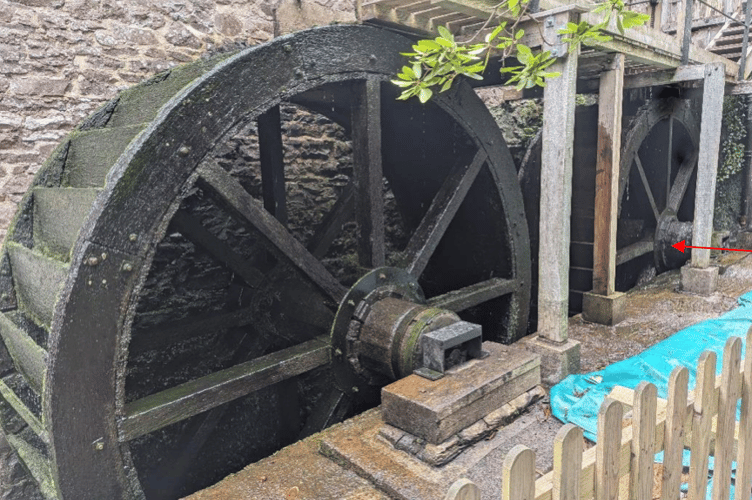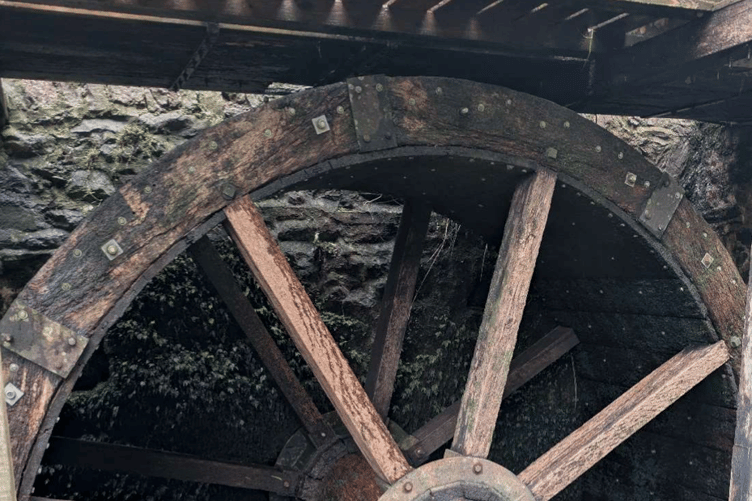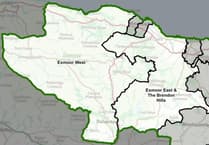AN oak waterwheel in an historic mill near Dunster Castle needs to be replaced due to its deteriorating state, the National Trust has said
The trust is asking Exmoor National Park Authority to grant planning permission for a new wheel to be built to continue operating Dunster Water Mill.
Last year, it was allowed to replace the waterwheel’s axle, which had also decayed due to operating in a permanently wet environment.
National Trust spokesman Stephen Hayes said: “The proposal is to replace all of the upper waterwheel in new oak timber to the same dimensions with the exception of the axle, which is new.
“The remaining oak timber is rotting and becoming very difficult to repair.
“The result is that the wheel is extremely inefficient as it leaks.
“This is significantly affecting our traditional method of flour production.

“The proposed new wheel would be built around the new axle by a skilled millwright.”
The mill was restored by the trust in 1980 and the waterwheel built in 2007, but it had now decayed to such a point that it could not be repaired.
Mr Hayes said Dunster Water Mill, which is in the castle grounds, was a rare example of a fully operational 18th century grade two starred listed double overshot watermill over three floors.
He said the waterwheel’s replacement would be carried out once the tourism season was over in order to avoid any impact on visitors to the castle and mill.
Mr Hayes said: “Our preference for a like for like timber is due to our ability to carry out our own repairs as we have done over the last 18 years.
“A denser, more water-resistant imported timber would add too much weight to the overall structure of the waterwheel.

“The proposed plan is to dismantle the current structure down to its metal collars and existing greenheart axle.
“The waterwheel components will be constructed off-site and assembled in situ, keeping the steel collars and greenheart axle.”
National Trust historical adviser Martin Watts said a grist or corn mill below Dunster Castle had been working almost continuously since the Middle Ages.
Mr Watts said the mill’s tandem waterwheels were both still capable of driving machinery and millstones and were nationally important.
Although once quite common in the Westcountry, few double mill layouts now survived in a complete or workable condition.
The continued working of the mill, using waterpower to produce stoneground wholemeal in the traditional way, was also important.
Dunster was one of a small number in Britain which still regularly grind and sell stoneground products to help pay for their upkeep.
Mr Watts said the external appearance of the mill with its timber waterwheels, now comparatively rare in themselves, belied the good quality Victorian cast iron-based machinery of its interior and the continued working and the maintenance of the mill, both aesthetically and mechanically, was considered important.
The Dunster mill produces flour regularly both for its visitors as well as for people living in the local community.





Comments
This article has no comments yet. Be the first to leave a comment.